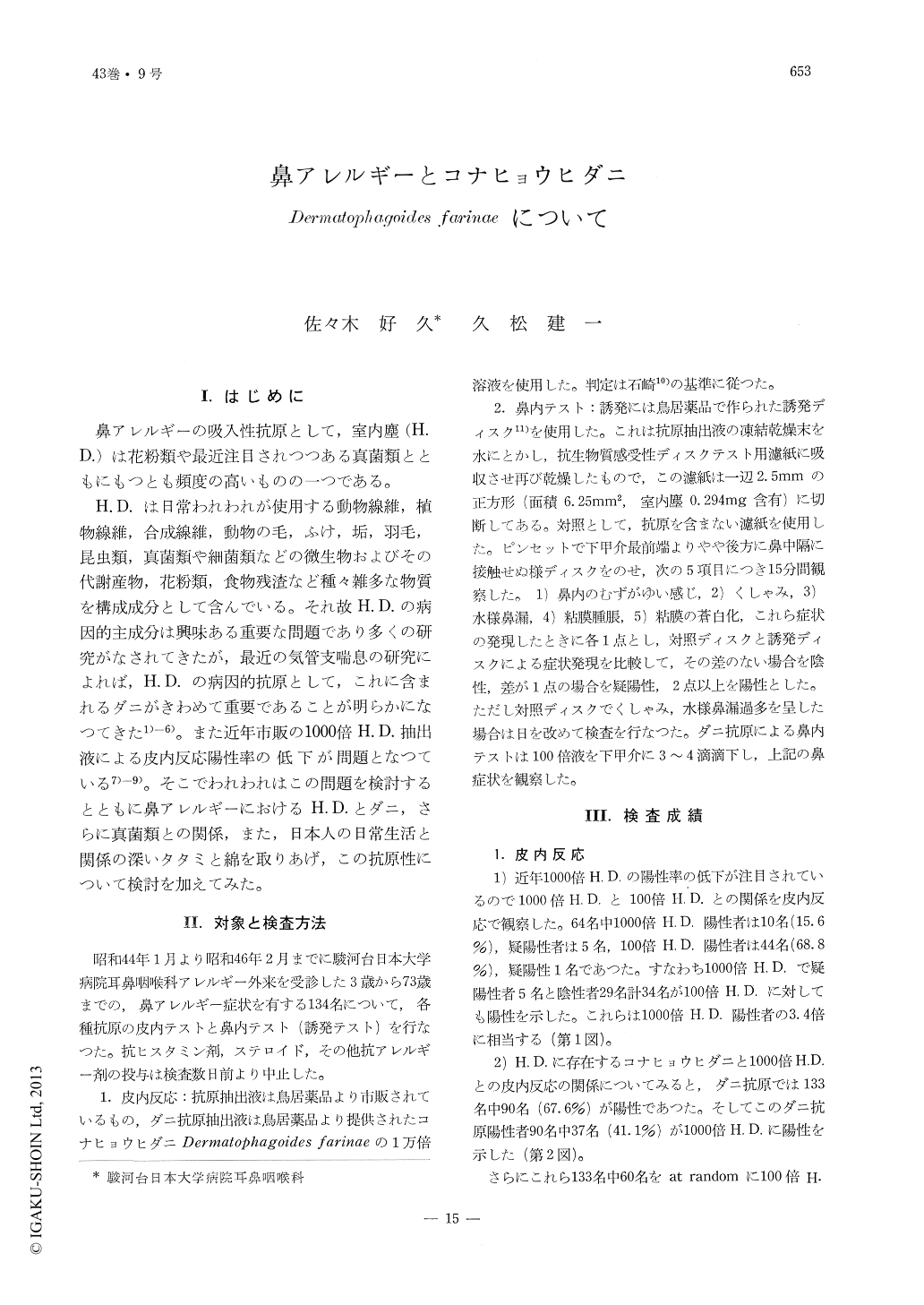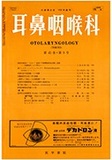Japanese
English
- 有料閲覧
- Abstract 文献概要
- 1ページ目 Look Inside
I.はじめに
鼻アレルギーの吸入性抗原として,室内塵(H. D.)は花粉類や最近注目されつつある真菌類とともにもつとも頻度の高いものの一つである。
H. D. は日常われわれが使用する動物線維,植物線維,合成線維,動物の毛,ふけ,垢,羽毛,昆虫類,真菌類や細菌類などの微生物およびその代謝産物,花粉類,食物残渣など種々雑多な物質を構成成分として含んでいる。それ故H. D. の病因的主成分は興味ある重要な問題であり多くの研究がなされてきたが,最近の気管支喘息の研究によれば,H. D. 病因的抗原として,これに含まれるダニがきわめて重要であることが明らかになつてきた1)-6)。また近年市販の1000倍H. D. 抽出液による皮内反応陽性率の低下が問題となつている7)-9)。そこでわれわれはこの問題を検討するとともに鼻アレルギーにおけるH. D. とダニ,さらに真菌類との関係,また,日本人の日常生活と関係の深いタタミと綿を取りあげ,この抗原性について検討を加えてみた。
The antigenic action of house dust in causing nasal allergy is studied. The house dusts are ordinarily composed of candida, aspergillus, cladosporium, penicillium, alternaria, cotton fibers, tatami dust and dermatophagoides farinae.
Our study showed that dermatophagoides farinae was the main antigenic substance in house dust. Tatami dust possessed the same antigenic quality as the house dust. The candida showed a different quality of antigenic properties from that of the house dust. The cotton fibers also showed different properties.
The diagnosis of nasal allergy is made not only by means of dermal test, but the importance of including intranasal test is highly emphasized.

Copyright © 1971, Igaku-Shoin Ltd. All rights reserved.


